Could you do this? Believe me, it is not as easy as it sounds. In fact, when I was preparing this lesson I got the tablets mixed up and couldn't tell by looking at and weighing them which one was supposed to be the heaviest and which was supposed to be the lightest.
This lesson is achieved by using the Baric tablets
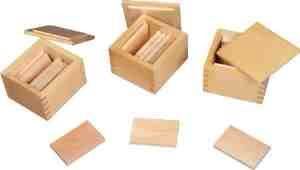
Three different types of wood, all different colors, varying in 10 grams from one another. Each box contains 6-8 tablets for matching. That's right, not only do they have to measure weight with their fingertips blindfolded, they also have to match up and sort through 18-24 different tablets.
So what's the point? Well, let's go back to that question earlier. Could you do this? The point is to introduce the idea that everything has a different weight. This lesson also shows that even though the tablets are the same size they don't weigh the same. And as always in a sensorial lesson it is also to refine their senses that helps them better absorb their world around them. In this case that sense is the baric sense.
I realized Delores was ready for this lesson when she was working with the locks and keys I set out for Lydia and she casually mentioned "this one is heavier."
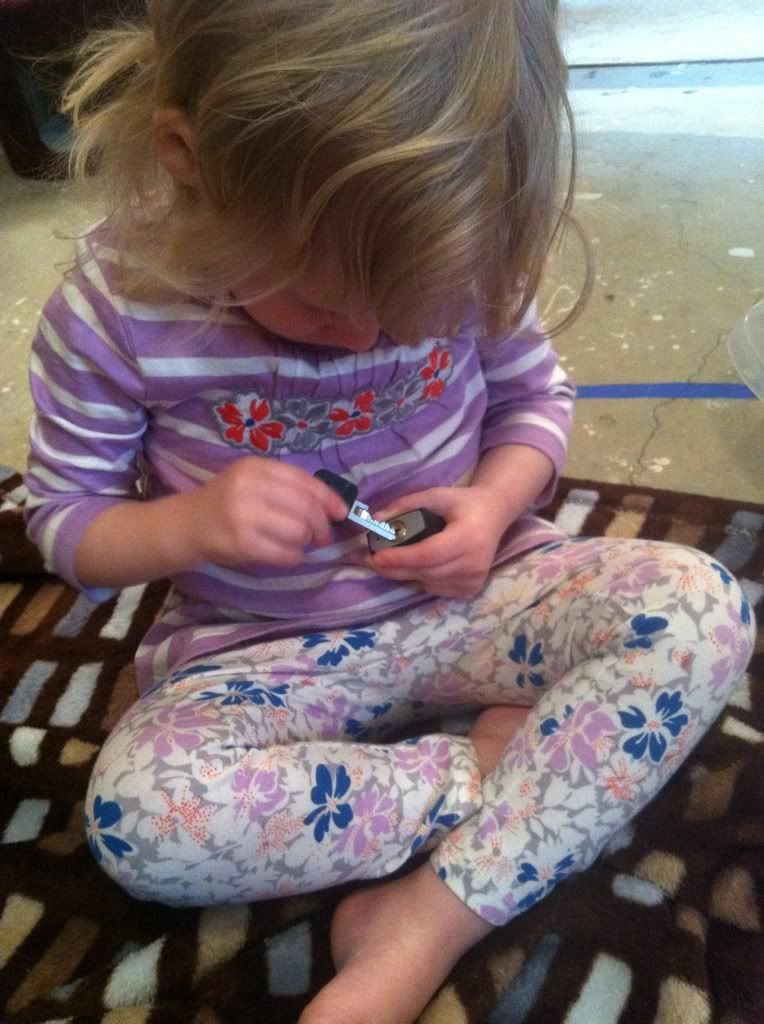
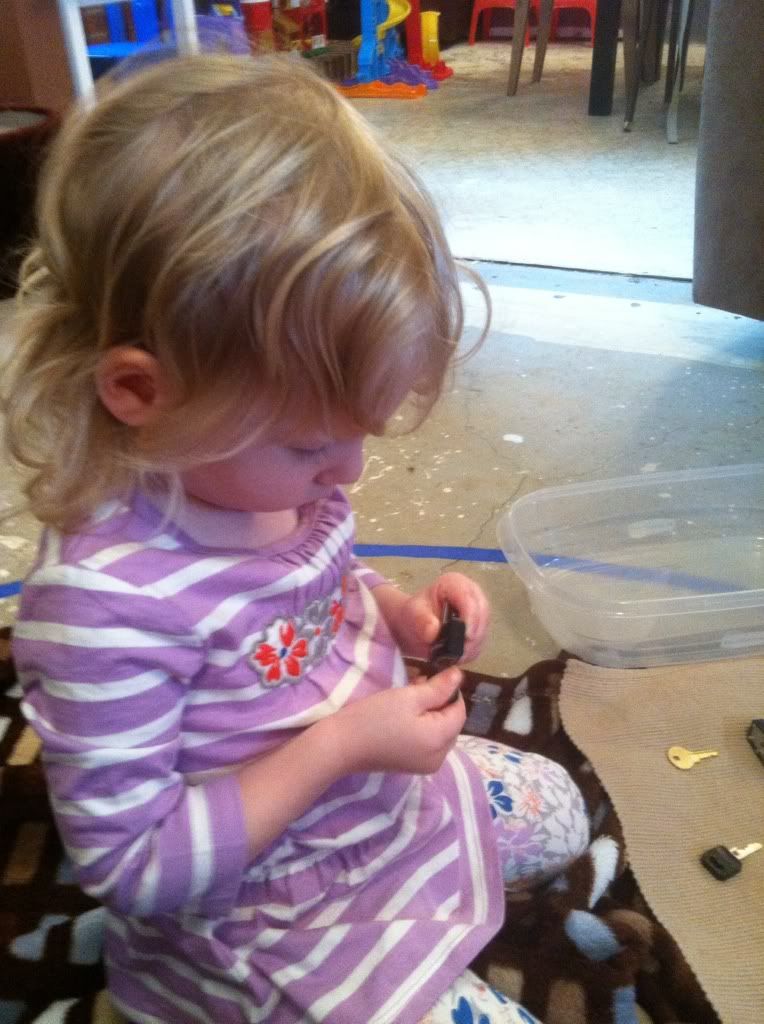
Lydia working with the locks and keys this past Monday.
That's all it takes. It is important to work in that window of opportunity for the child so I wasn't going to waste any time. I found an informative blog post at Rhythm of the Home and headed to Lowes after a failed trip to Home Depot. Two weeks later I had these made and out on the shelves.
Just a quick note though, if you are using the link above she doesn't tell you what wood is supposed to be light, medium and heavy weights. In my experience I found the poplar to be the lightest and the oak to be the heaviest. The aspen was supposed to be the medium weight but it felt the same as the poplar. The type of aspen our Lowes carried was not them same as she used. So when picking out your wood weigh them yourself and trust your instincts. I didn't and I'm going back for pine this weekend. You can also refer to this Wood density website to give you a better idea of what woods are heavier and lighter.
Now back to the lesson. During the first presentation the child only works with the heaviest and the lightest tablets. After they have mastered that then you move on to the medium and heaviest, then lightest and medium and then finally all three. So here is Delores doing brilliantly (if I do say so myself) with the light and heavy baric tablets.
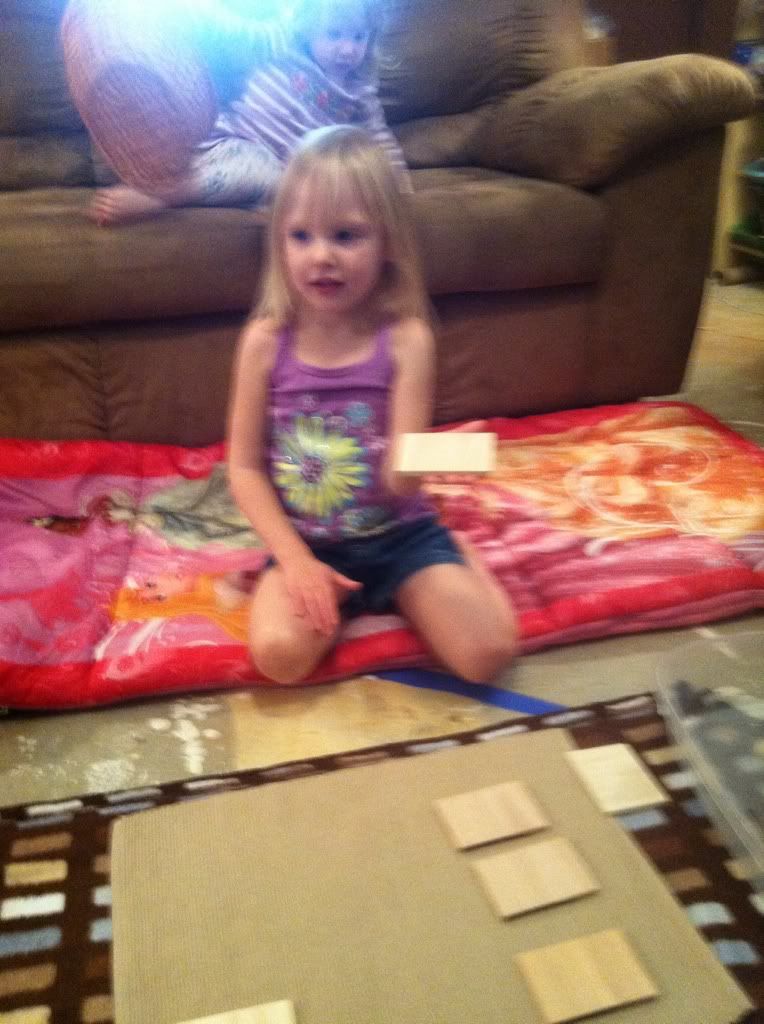
Weighing, no blindfold
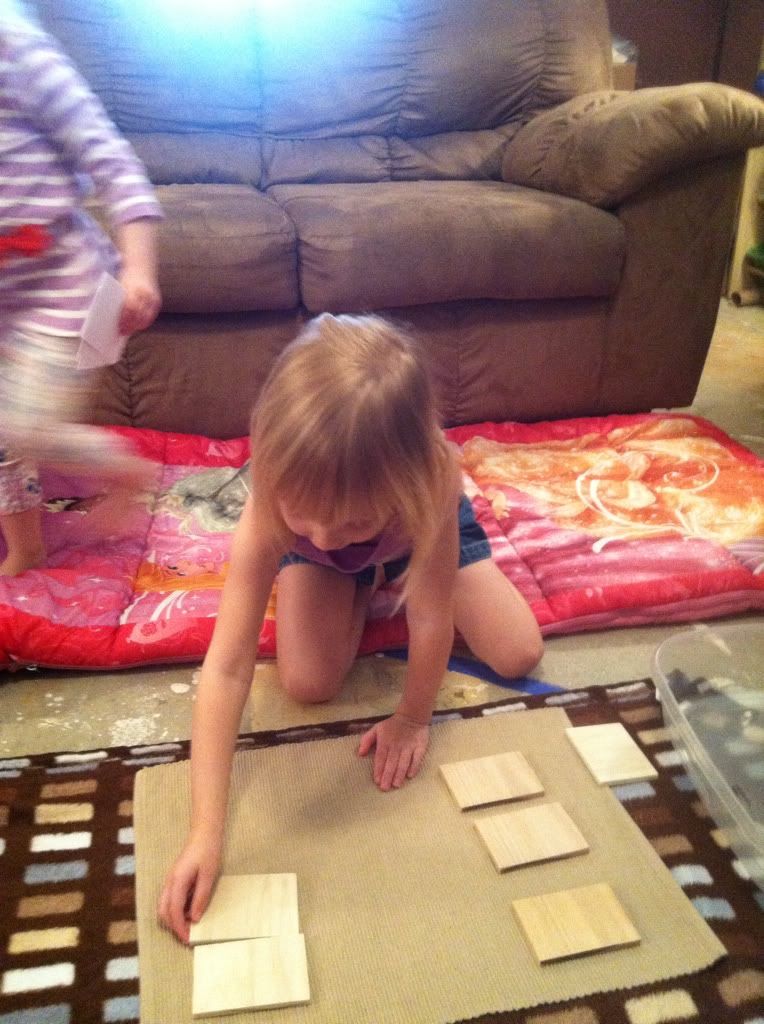
Matching, no blindfold
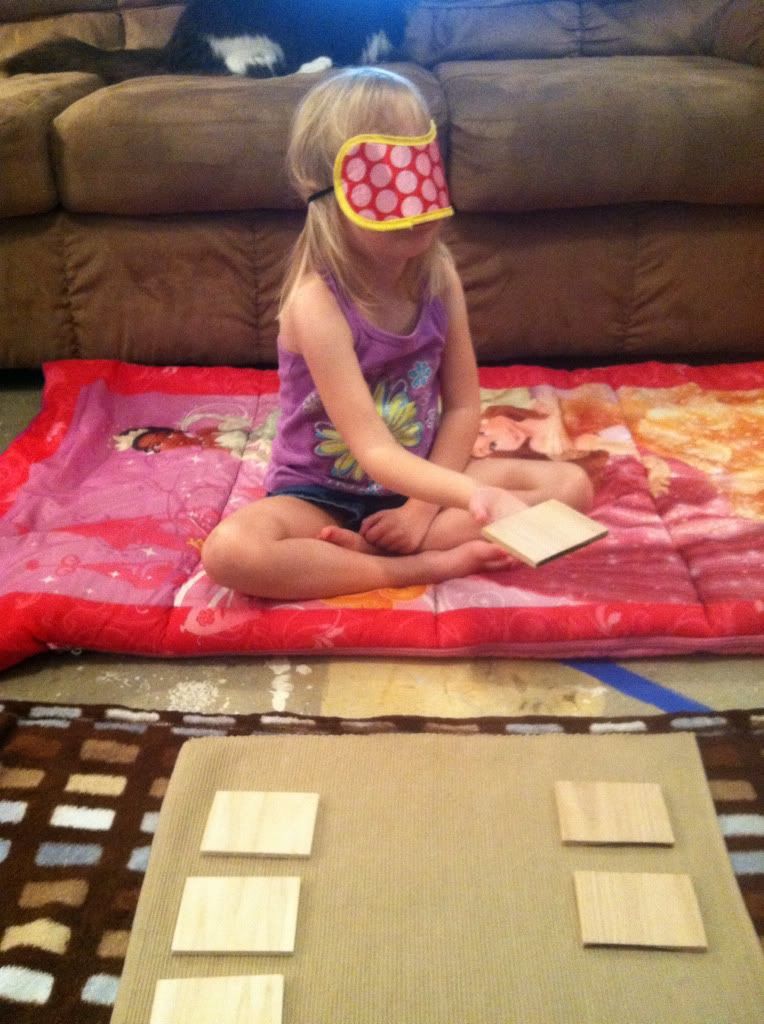
Weighing and matching, blindfolded.
We both enjoyed this lesson. I don't know if every child is like this, but she always does well when there is a blindfold involved. This amazes me because most adults are so out of tune with their senses it would be hard for them to do this with their eyes open. I know I couldn't.

No comments:
Post a Comment